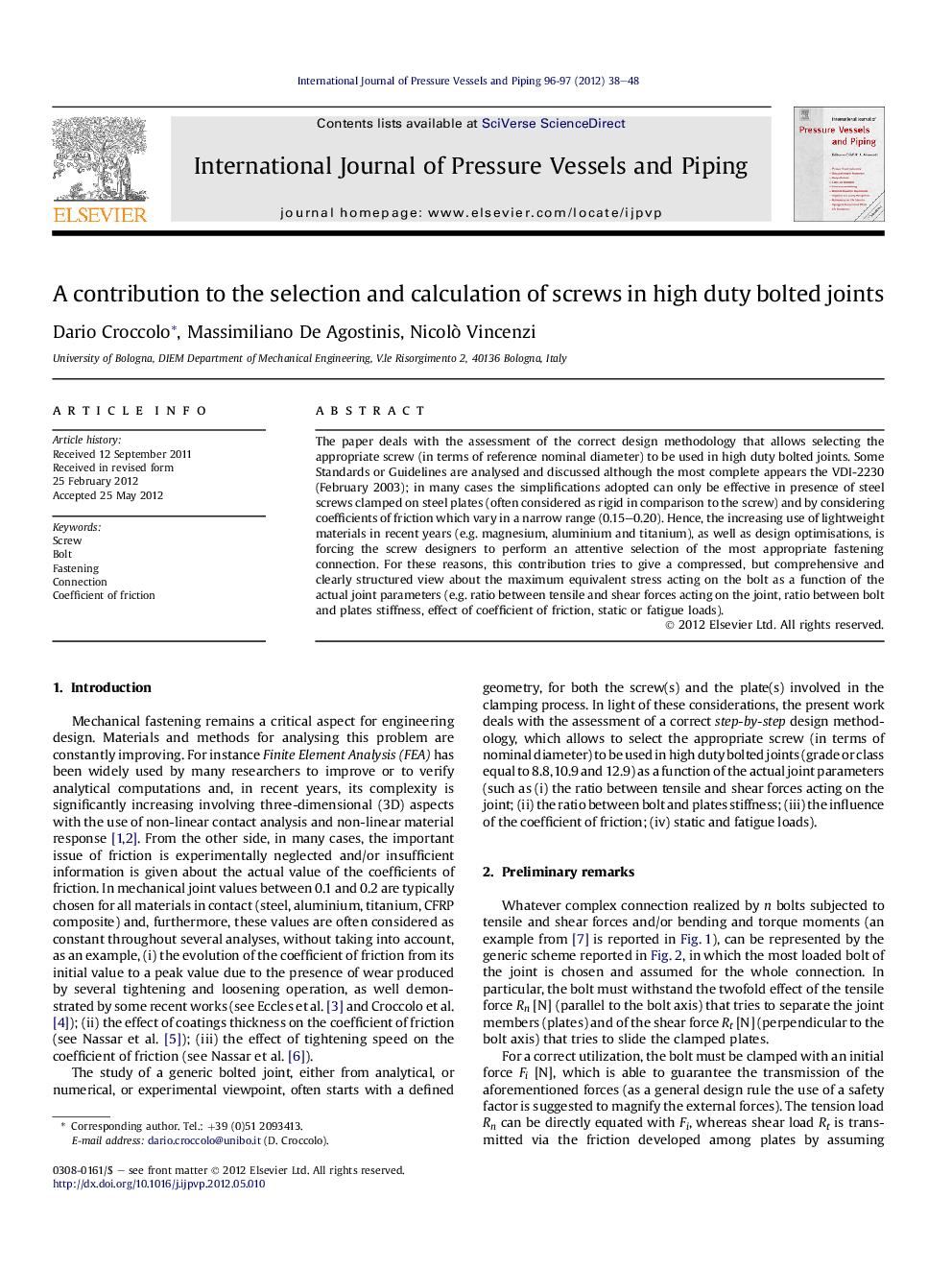| Article ID | Journal | Published Year | Pages | File Type |
|---|---|---|---|---|
| 788481 | International Journal of Pressure Vessels and Piping | 2012 | 11 Pages |
The paper deals with the assessment of the correct design methodology that allows selecting the appropriate screw (in terms of reference nominal diameter) to be used in high duty bolted joints. Some Standards or Guidelines are analysed and discussed although the most complete appears the VDI-2230 (February 2003); in many cases the simplifications adopted can only be effective in presence of steel screws clamped on steel plates (often considered as rigid in comparison to the screw) and by considering coefficients of friction which vary in a narrow range (0.15–0.20). Hence, the increasing use of lightweight materials in recent years (e.g. magnesium, aluminium and titanium), as well as design optimisations, is forcing the screw designers to perform an attentive selection of the most appropriate fastening connection. For these reasons, this contribution tries to give a compressed, but comprehensive and clearly structured view about the maximum equivalent stress acting on the bolt as a function of the actual joint parameters (e.g. ratio between tensile and shear forces acting on the joint, ratio between bolt and plates stiffness, effect of coefficient of friction, static or fatigue loads).
► The paper presents an innovative method for selecting of ISO metric screws. ► The screws have to be used in high duty bolted joints for lightweight connections. ► Some standards have been deeply analysed. ► The nominal stress acting on the bolt has been accurately determined. ► The most important parameter to be actually controlled is the thread coefficient of friction.
